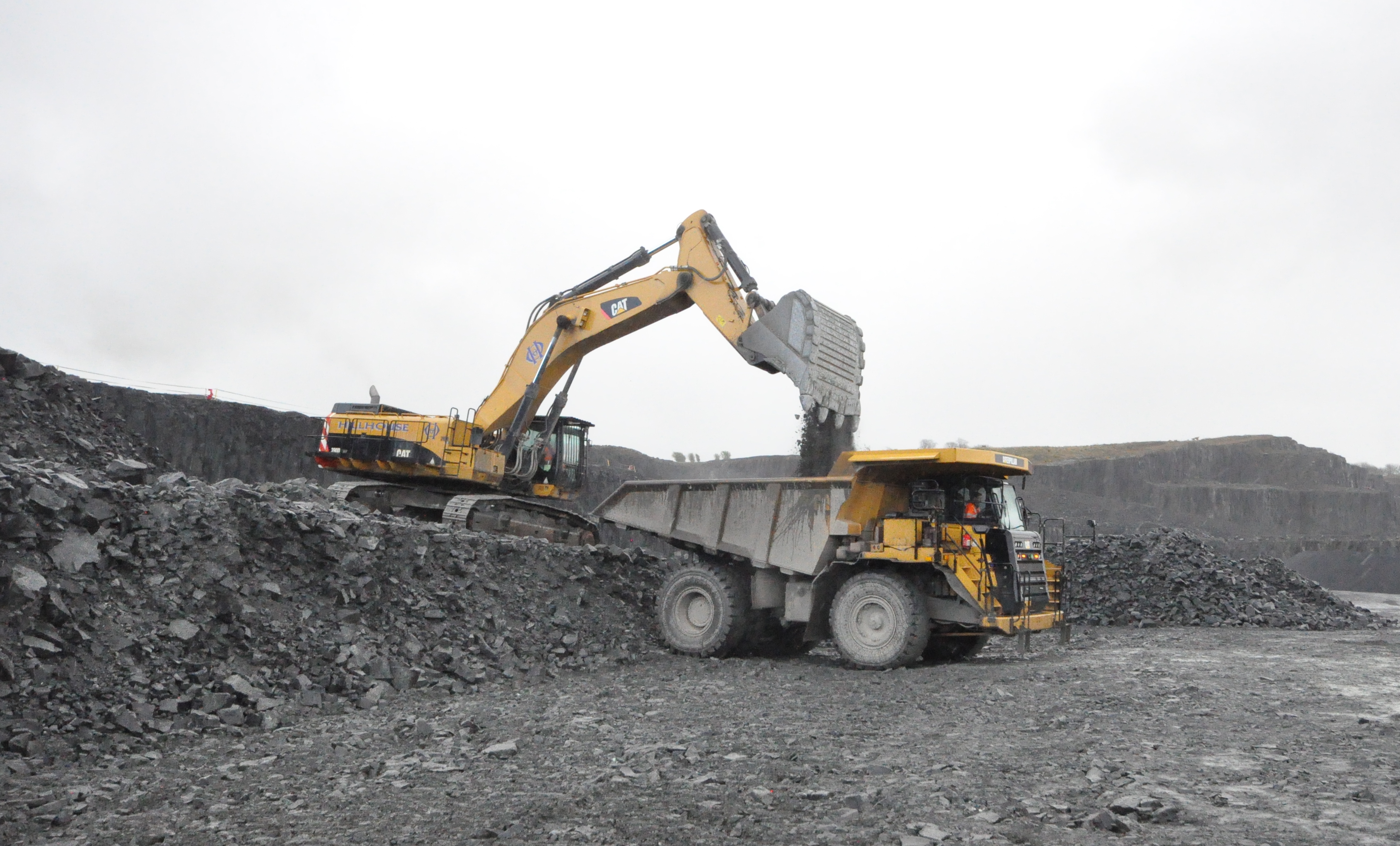
When it comes to having your finger on the pulse of cost effective fleet management, Hillhouse Quarry Group Ltd, Operations Director, Justin Gill, and his team are the people to know, as Finning News found out when we visited its main Hillhouse Quarry near Troon, that produces whinstone and its new sand and gravel quarry near Garpel.
After the busiest two years in the history of the privately-owned business, supplying over 800,000 tonnes of asphalt material for the construction of the new M8 motorway near Glasgow, uptime and fleet maintenance has been put to and passed the test, as Justin explained: “To meet demand from the M8 project and our other customers, we had to work our equipment very hard, especially our prime movers, namely our Cat® 390 excavator and our two Cat® 775 trucks.”
With a new asphalt plant, concrete block making, crushing and screening all on one site, operations at its main Hillhouse quarry have ramped up considerably, leading to its first prime mover rebuild programme, which will see its Cat®775’s and Cat® 390 get a new lease of life, at the Finning Hamilton branch.
Justin: “Over the last few years we have reviewed the way we run and maintain our fleet. We have good operators, who know the job well and an experienced management team, with very supportive owners. This has facilitated the strategy of buying the best and making sure that the product is operated, maintained and supported in the best way possible”.
“So as part of our transition from an ADT based fleet in 2012, to the fleet match of our Cat® 390 and Cat® 775’s, we undertook a whole life costing exercise, comparing the purchase price, residual values and full operating costs, including maintenance and warranties, associated with the fleet investment.
“This then became the model for future decisions, including capital expenditure on new and used equipment, as well as major overhauls, like rebuilds.
“Since this time, our fleet mix has continued to develop, as has our approach to servicing, preventative maintenance and repair before failure. For example, with our recent decision to opt for block labour with Finning, we now have a dedicated engineer, that manages and looks after all our needs. It’s a much more efficient and cost-effective way of working, as we have a single point of contact, that is very proactive.
“This means we are keeping one step ahead of preventative maintenance, as our Finning engineer knows the fleet and is constantly assessing machine performance, with CPU downloads and visual inspections, meaning worn or damaged components like hoses, are replaced before failure.
“Similarly, when it comes to larger repower or rebuild maintenance projects, we look at the reality behind the costs of removing a machine from the site for an extended period and work collaboratively with the Finning team to assess the work that will be needed, at the time and later on down the line.
“This is significant, because if we know that something will need doing in 12-18 months’ time that will see the machine having to leave site again, we will get the work done in one go. This gives us the comfort that we will have a full life from the equipment.
“Decisions like this are built on a level of trust and mutual understanding and also reflect the way in which we can make other commercial decisions with confidence. For example, with our new sand quarry in Garpel, we recognised that we had a very different challenge to Hillhouse. The unusual layout of the quarry with its very unique 30 metre rise, means that it looks like a traditional quarry face, so required an ADT as the prime mover.
“The problem for us was one of safety and braking performance, due to the elevation and harshness of the sand and slurry mix, which can have a severe impact on the life of brakes. Here we talked to Finning and the team were able to test a new Cat® 730C2 unit, with sealed all axle wet brakes, retarder and automatic traction control. With positive feedback from the operators, we fleet matched the unit with a new Cat® 330 excavator.
“With the new site requiring the intermittent use of a dozer, we looked at the cost of hiring in a unit for a few months and when we saw the kind of investment that was needed, we approached Finning to cost up a second-hand Cat® D6N. For the cost of a few months hire, we were able to purchase a machine that had a full-service history and make some alterations to it, for the same cost. We now anticipate getting five years use out of the used dozer, an investment that will deliver great payback.
“By focusing on the best products for the right applications and giving our team a say in what they want to see onsite, we continue to benefit from a fleet maintenance focus that has everyone working together. As we look to the future, this won’t change, it will only get stronger, especially as the machines will also be part of the conversation, using technology to share their data with the rest of us.”